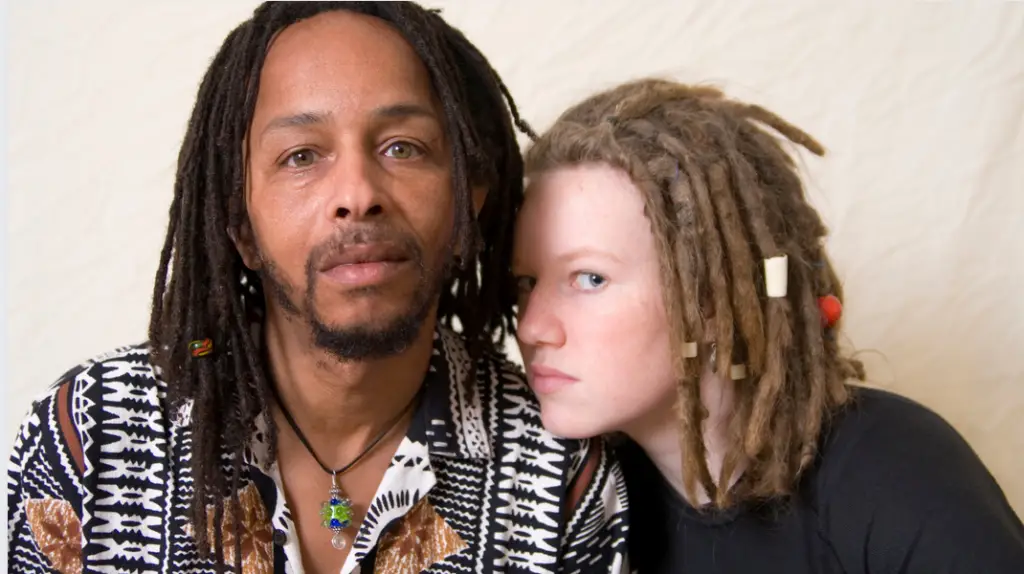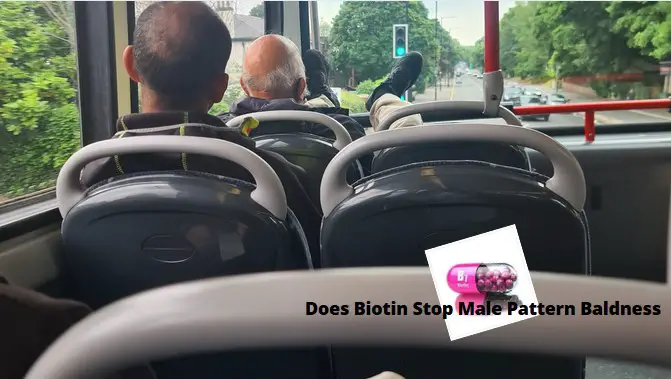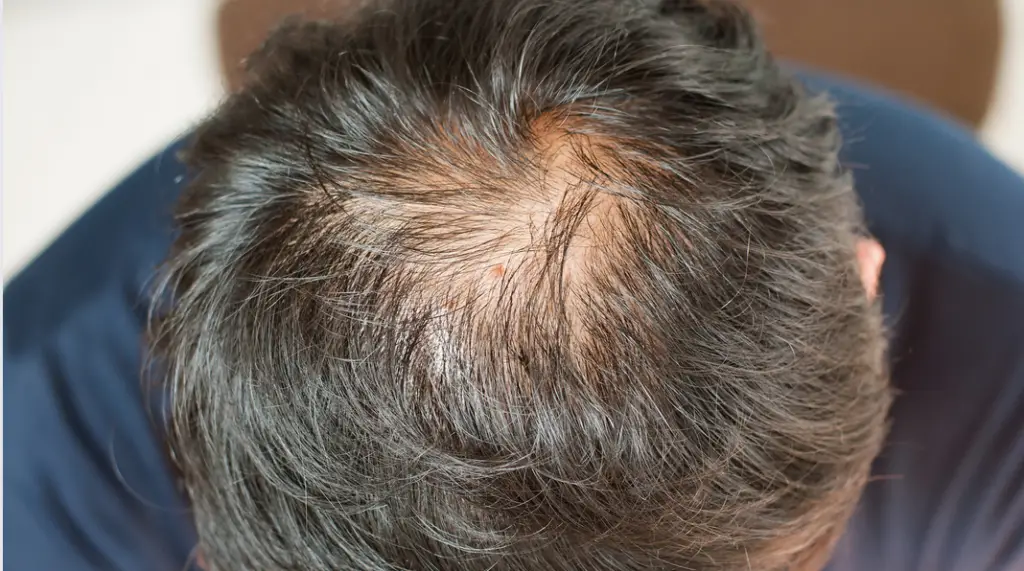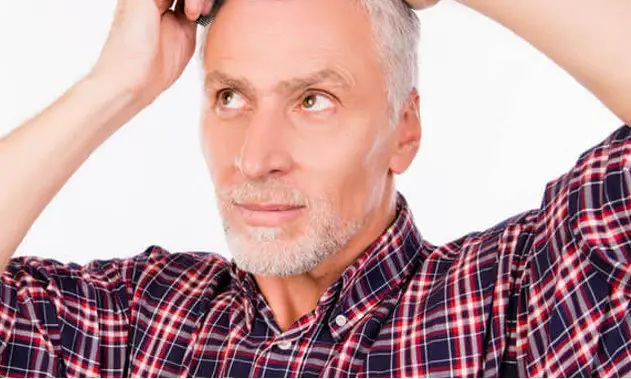Dreadlocks are a popular hairstyle for men, but they can also cause female and male pattern hair loss. There are several reasons for this, including traction alopecia and thinning at the root. We’ll explore each of these in-depth below!
Dreadlocks are an ancient African style that has been revived in recent times. Dreadlocks are an alternative to traditional braids or cornrows, the same way we see them done today, by people who want something different from the usual styles they find on in a hair salon shop today.
What is male pattern baldness?
Male pattern baldness, also known as androgenic alopecia, is a common form of hair loss affecting men. Despite its name, it can also affect women. Unfortunately, some people with male pattern baldness may find their thinning hair impossible to hide or disguise. For many, the thought of wearing dreadlocks to hide thinning or balding hair can be appealing. But before taking this route, it’s important to consider the myths and facts about male pattern baldness dreadlocks.
Balding dreads are possible in extreme cases. If hair loss is severe enough, the scalp may be visible through the dreadlocks, making them less effective as camouflage. Another issue is traction alopecia, which occurs when a person pulls too tightly on the roots of their hair while styling. This can happen if you’re styling your dreadlocks too tightly, causing further hair loss. In some cases, bald spots may appear in the dreads due to damage from over-styling.
Thinning hair in dreadlocks is also a potential problem for those with male pattern baldness. Since dreadlocks are thick and bulky, they can weigh down the hair and pull on the roots of the thinning areas. This can cause further damage and thin of the hair, making it difficult to disguise the balding areas.
If you’re considering using dreadlocks as a way to disguise male pattern baldness, be sure to consult with a professional stylist who has experience with thinning hair and can advise you on a look that will work for your hair type. It’s also important to consider the impact that styling with dreadlocks could have on your scalp health. Damage to the hair follicles can occur over time, so regular maintenance and monitoring of your scalp health are essential.
Balding dreads
Balding dreads are common and can be caused by stress, illness, or a change in hormones. They can also be treated with medication. Dreadlocks can be used to cover bald spots on your head and thinning hair.
Bald spot in dreads
Dreadlocks are a great way to hide or cover up your thinning hair, but you should be aware that this can also cause other problems. You may experience balding in the dreads and even along the rest of your head. This is because hair is continually growing back out at the root during the process of growing each lock, so if you have a lot of new growth on the top and very little at the bottom (as most people do), it will show up more prominently than usual when counted as one piece instead of two pieces around your head. If this happens, then there’s nothing we can do about it other than keep wearing them until they’re completely gone!
Do dreadlocks make you bald?
Generally speaking, Yes, Dreadlocks can potentially cause balding or thinning, but not in the same way as male pattern baldness (MPB). This type of hair loss is known as traction alopecia, which occurs when the hair is pulled in the same way for a long time. This can occur with hairstyles like braids, dreadlocks, and ponytails, as well as when tight headwear is used in the same way every day. Traction alopecia is more likely with certain hairstyles and professions, including dreadlocks and braids, as well as with very long hair.
Chemical treatments, such as relaxers, can also make traction alopecia more likely.
To prevent this type of hair loss cause by Dreadlocks
It’s best to avoid hairstyles that are too tight or too long, as well as using natural, water-soluble products that won’t cause hair thinning or loss. Additionally, cleaning the scalp regularly and keeping the hair moisturized can help protect against traction alopecia. If hair loss due to dreadlocks has already occurred, treatment may be necessary.
This could include medications, scalp massage, laser therapy, and even hair transplant with dreadlocks for those who have significant balding or bald spots in their dreads. Regardless of the situation, it’s important to recognize that bad dreadlocks and thinning hair from dreadlocks can be damaging both physically and psychologically.
Read more about Dreadlocks can cause hair loss.
Dreadlocks are a style of hair that grows out of your scalp and is wrapped into small loops or ropes, with the ends tied off at the front. The process is called “braiding,” but it isn’t technically weaving because there aren’t any threads involved. This type of styling has been around for thousands of years and continues today, with new styles emerging all the time!
The way dreadlocks work is by pulling on your natural hair follicles, so they’re stretched out over time—not unlike how an elastic band works when you stretch it out over time (at least until you notice that someone else started calling you “Stretch” instead). As these shortened strands grow back in length, they will eventually reach their full potential length again; however, if they’re not cut regularly, then this could result in some serious issues down the road, such as shedding or even breakage due to damage follicles.”
Bald with dreadlocks
Dreadlocks are not a cure for baldness. In fact, they can make you look bald and feel ugly.
When you have dreadlocks, it’s easy to forget that your hair is actually there because it blends in with the rest of your head. Your scalp may even feel like it’s bare when compared with what’s happening above it!
Dreadlocks can also make you more self-conscious about how your head looks because they’re so different from anything else on your body (and yes—even if this does happen).
Thinning hair dreadlocks
Some men have been using dreadlocks to hide their thinning hair for years. While it’s true that dreadlocks are not the cause of hair loss, they can help hide it. The way they do this is by providing a barrier between your scalp and the rest of your head, which reduces friction and friction damage to your follicles.
This helps prevent traction alopecia—a condition where an area on your scalp becomes inflamed due to friction caused by constantly pulling out your own hair (think: pulling out the rubber band on your wristwatch). The inflammation causes more damage than usual because there are now two layers of hair growing in an area where only one previously existed before! If left untreated over time, then this could lead not only towards baldness but also premature graying due to aging processes such as telogen effluvium (TE), which causes a slow down growth rate during its primary stage while still being active at all times according to research done here at Harvard University Medical School.”
Traction alopecia dreadlocks
Traction alopecia is a condition that can cause hair loss on the scalp and in other areas of your body. It’s caused by wearing tight or braided hairstyles for long periods of time, which puts too much pressure on your hair follicles.
If you have traction alopecia, it will be obvious if you have thinning patches of hair around your temples and crowns—but there are treatments available that can help treat this condition. You may want to seek out professional help from an expert who specializes in treating traction alopecia before trying any remedies at home.
Damaged hair after dreadlocks
If you’ve decided to start dreadlocking your hair, it’s important to understand that there’s a chance your locks will experience some damage. This is due to the fact that dreads are made of three different types of hair: natural (straight or curly), synthetic, and human-made fibres.
As well as being damaged by chemicals in products like conditioner and shampoo, the oils from our scalp can become trapped in the knots—and if they aren’t washed out regularly, this can cause them to break down over time.
It’s also worth noting that when you’re doing this process yourself without help from professionals at a salon or barbershop, there’s no guarantee that all your strands won’t end up looking unevenly distributed across each strand; this could be caused by faulty technique during the application or simply because some loose ends got snipped off along the way!
Bad dreadlocks
Dreadlocks are not a cure for male pattern baldness. The idea that you can stop hair loss with dreads is simply unproven and may even be harmful to your scalp.
Dreadlocks can cause traction alopecia, which is an involuntary hair loss caused by repeated tugging on your scalp when you wear them. This is especially common among people who have thinning hair already since wearing dreads will make it even thinner. For those with fine or thinning strands of their own, this can result in bald patches around their temples where they’ll start losing their locks more quickly than usual—and even faster if they’re using type 2B natural processes like twist-outs or cornrows!
Thinning caucasian hair dreadlocks
Thinning caucasian hair dreadlocks are a hairstyle that has become popular in recent years. Dreadlocks are a popular trend among African Americans and other people of color, but they’re also gaining traction in white culture as well.
The term “dreadlock” refers to the braids or weaves created from natural hair pulled together on the scalp into one mass by twisting or braiding it. The process can be done with just about any length of curly or straight hair; however, it’s most commonly associated with wearing these styles long term—like for months at a time—and often involves multiple rows of varying thicknesses that are tied together by elastic bands (or “elastic cap”). This makes them look like rings around your head!
Thinning Caucasian Hair Dreadlocks: What Causes It?
How do I know if my dreadlocks are thinning my hair?
If you notice that your dreadlocks are thinning your hair, it’s important to know whether this is normal or a sign of a medical condition.
If the hair loss is more than just a few strands at the root, then it may be time for you to see a doctor. For example:
If there is significant shedding in one or two spots on your scalp and/or if there are large patches of balding skin on top of your head (papilla), then this could be caused by an underlying medical condition such as alopecia areata (AA). In these cases, treatment may involve medication and/or surgery to remove affected skin before another round of chemotherapy can be administered later on down the road.*
What causes thinning hair when you have dreadlocks?
The most common cause of thinning hair when you have dreadlocks is traction alopecia. This is a type of hair loss that occurs when your scalp pulls on the follicle, which can lead to breakage and further thinning. Traction alopecia affects all types of hair, but it’s more common in African-American men than in any other race or ethnicity.
While there are no medications approved by the Food and Drug Administration (FDA) for treating traction alopecia, some doctors may prescribe minoxidil topical solution (Rogaine) as an adjunct therapy—meaning that they recommend it along with other treatments—to help promote growth and regrowth in patients who have experienced significant damage due to excessive pulling on their scalp during head wrapping sessions or other styles that involve stretching out each individual strand for hours at a time.
Is it normal to lose hair with dreadlocks?
It depends on the person. For example, if your hair is healthy and well cared for, it is likely that you will not notice much of a difference in how much of your hair falls out when you have dreadlocks. However, if your locks are damaged or unhealthy due to poor care or just being old (you know who you are), then this could be a major issue for you!
For example: If someone has long curly hair that was dyed multiple times at once without proper care during each dye job—the result will probably be more frizzy and dry looking than normal because of how many chemicals were used on those strands at one time (and again as needed). This can also cause breakage from over-processing/frizzing up what was already fragile before starting this process, therefore leading us back around again until we reach our starting point–which would still mean having less volume overall due either way:
Should I cut my hair if it’s thinning from locking?
The answer to this question is no. Dreadlocks do not cause hair loss. Hair loss is caused by other factors, like genetics and stress, diet, health, and lifestyle. However, if you have been growing your hair for a long period of time in dreads, then you should cut them down to prevent further damage from being done to the follicles over time.
Can I grow my hair back if it falls out after locking?
You may have heard that it’s possible to grow your hair back, but how exactly do you go about doing that?
It’s more complex than just growing your locks again. The process of re-growing hair involves a lot more than simply washing with shampoo or conditioner and letting them air dry—it also requires patience, consistency, and time.
So if you’re looking for ways to keep your dreadlocks healthy without risking losing them altogether, here are some tips:
- Make sure you’re using products made specifically for natural hair. These will work better than store-bought options because they don’t contain any chemicals or artificial ingredients (like sulfates).
- Apply olive oil every week! It helps keep the scalp clean and moisturized while preventing dandruff formation on the scalp itself; this means less itchiness for everyone involved!
What is traction alopecia?
Traction alopecia is a form of hair loss caused by excessive tension on the hair root. It’s most commonly seen in men who wear their hair in tight braids, cornrows, or ponytails. The condition can also occur with extensions.
Traction alopecia can be permanent and irreversible.
What causes traction alopecia?
Traction alopecia is caused by the pulling of the scalp. It can be caused by a number of things, including:
- Dreadlocks or braids that pull on your hair
- Cornrows or other hairstyles that pull on your hair
- Wearing a heavy hat that pulls on your hair, Tight ponytails, or buns
It can cause traction alopecia. If you’re worried about this, talk to your hairstylist about ways to keep your hair from being pulled. The best way to prevent traction alopecia is by making sure that you don’t pull on your hair too hard when styling it.
Is it possible to have dreadlocks and not experience any hair loss?
- Yes, it is possible to have dreadlocks and not experience any hair loss.
- Dreadlocks can be grown without losing hair.
- The key is maintenance: keep your dreads healthy by avoiding harsh chemicals, and don’t expose them to heat or excessive moisture for long periods of time (which can lead to split ends).
How can I keep my dreads healthy?
To keep your dreads healthy, you’ll need to take care of them. Regularly washing and conditioning your hair can help prevent breakage and split ends, which are caused by dryness or friction on the scalp.
Regular shampooing is essential for keeping your scalp clean and healthy while preventing dreadlocks from becoming tangled together when they grow back in after being cut off or taken down by a stylist. Look for products that don’t contain sulfates (sulfates strip away oils from the skin) because these harsh chemicals make it more likely that split ends will happen again if you use normal shampoos too often over time—and no one wants more split ends!
If possible, skip using conditioner altogether; instead, try using an oil-based product like coconut oil or jojoba oil as part of your daily routine (see “Using Oils”). These natural oils not only moisturize dry hair but also act as anti-frizz agents when applied directly onto wet strands before washing out later on! Plus, they smell great too!
Can I still dread my hair while it’s thinning?
If you are balding, don’t dread it. If your hair is thinning and falling out, don’t dread it. And if your hair is damaged or has traction alopecia, don’t dread it either.
If it’s any consolation to you, the people who have been wearing their hair in dreads for years have no idea what they’re doing either!
Dreadlock thinning at root
The dreadlock root is part of your hair that grows out of your scalp. As you can imagine, this is where all the action happens! If you’ve ever seen a bald little boy with long locks coming down his back and wondered why he didn’t have any hair on his head, then this article will make sense to you.
The root is where all those amazing new styles start! The longer we let our locks grow out naturally, the more we’ll notice how much more healthy they look as well as how much thicker they become over time – especially if we are lucky enough not to lose any since there aren’t many people who lose their entire head but rather lose some length at first before it starts growing back again in patches (sometimes even faster than before).
Conclusion
The most important thing to remember is that your scalp is a very fragile part of your body, so you need to take care of it and make sure you don’t damage it. You can do this by washing your dreads regularly with a shampoo free from silicone or petroleum, using conditioners made for dry hair types, and keeping them away from heat sources like blow dryers or hot irons. Also, avoid using products like oils or gels because they can cause more damage than good.
- AI Powered Bald Filter Online 2024: See Yourself with No Hair! - January 19, 2024
- Harklinikken Bad Reviews 2024: Analyzing Negative Feedbacks - January 18, 2024
- How to Get the Alex Eubank Hair | Step-By-Step Tutorial 2024 - January 18, 2024








